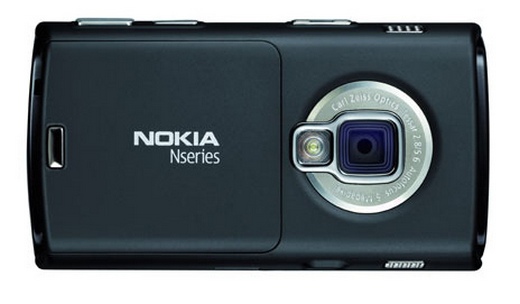Re: Koji foto-aparat koristite?
Poslato: 22 Okt 2013, 19:28
Ne.
Vec sam dao definicije klasa aparata. Ne bih da se ponavljam, ali ajde:
http://en.wikipedia.org/wiki/Point-and-shoot_camera
A point-and-shoot camera, also called a compact camera, is a still camera designed primarily for simple operation
http://en.wikipedia.org/wiki/Prosumer
For example, a prosumer grade digital camera is a "cross" between consumer grade and professional grade.
Ili:
"The size and form of the Prosumer camera is smaller than a Digital SLR camera. Prosumer camera is light and equipped with a super zoom lens. "
"Prosumer camera is a combination / cross between a DSLR cameras (often referred to as the camera "PRO / professional") with a pocket camera (the camera is often called "consumer")."
Ovakve aparate niko ne naziva kompaktima niti to jesu. Velicina senzora je nebitna jer imas APS-C senzor u kompakt telu - sta je to? Kompakt ili?
Naprimer definisite ovo:
http://www.dpreview.com/reviews/sonydscr1/
(po nidzi do je kompakt). PAZLJIVO pogledajte specifikacije.
DSLR:
http://en.wikipedia.org/wiki/Digital_si ... lex_camera
A digital single-lens reflex camera (also called a digital SLR or DSLR) is a digital camera combining the optics and the mechanisms of a single-lens reflex camera with a digital imaging sensor, as opposed to photographic film.
Mirrorless:
http://en.wikipedia.org/wiki/Mirrorless ... ens_camera
The mirrorless interchangeable-lens camera (MILC) is a class of digital system cameras. This type of cameras provide interchangeable lens mount. They do not have a mirror reflex optical viewfinder.
Micro 4/3:
http://en.wikipedia.org/wiki/Micro_Four_Thirds_system
The Micro Four Thirds system (MFT) is a standard created by Olympus and Panasonic, and announced on August 5, 2008,[1] for mirrorless interchangeable lens digital cameras and camcorders design and development.[2]
MFT shares the original image sensor size and specification with the Four Thirds system, designed for DSLRs. Unlike Four Thirds, the MFT system design specification does not provide space for a mirror box and a pentaprism, allowing smaller bodies to be designed, and a shorter flange focal distance and hence smaller lenses to be designed. Virtually any lens can be used on MFT camera bodies, as long as an adapter exists.
Itd itd itd.
Vec sam dao definicije klasa aparata. Ne bih da se ponavljam, ali ajde:
http://en.wikipedia.org/wiki/Point-and-shoot_camera
A point-and-shoot camera, also called a compact camera, is a still camera designed primarily for simple operation
http://en.wikipedia.org/wiki/Prosumer
For example, a prosumer grade digital camera is a "cross" between consumer grade and professional grade.
Ili:
"The size and form of the Prosumer camera is smaller than a Digital SLR camera. Prosumer camera is light and equipped with a super zoom lens. "
"Prosumer camera is a combination / cross between a DSLR cameras (often referred to as the camera "PRO / professional") with a pocket camera (the camera is often called "consumer")."
Ovakve aparate niko ne naziva kompaktima niti to jesu. Velicina senzora je nebitna jer imas APS-C senzor u kompakt telu - sta je to? Kompakt ili?
Naprimer definisite ovo:
http://www.dpreview.com/reviews/sonydscr1/
(po nidzi do je kompakt). PAZLJIVO pogledajte specifikacije.
DSLR:
http://en.wikipedia.org/wiki/Digital_si ... lex_camera
A digital single-lens reflex camera (also called a digital SLR or DSLR) is a digital camera combining the optics and the mechanisms of a single-lens reflex camera with a digital imaging sensor, as opposed to photographic film.
Mirrorless:
http://en.wikipedia.org/wiki/Mirrorless ... ens_camera
The mirrorless interchangeable-lens camera (MILC) is a class of digital system cameras. This type of cameras provide interchangeable lens mount. They do not have a mirror reflex optical viewfinder.
Micro 4/3:
http://en.wikipedia.org/wiki/Micro_Four_Thirds_system
The Micro Four Thirds system (MFT) is a standard created by Olympus and Panasonic, and announced on August 5, 2008,[1] for mirrorless interchangeable lens digital cameras and camcorders design and development.[2]
MFT shares the original image sensor size and specification with the Four Thirds system, designed for DSLRs. Unlike Four Thirds, the MFT system design specification does not provide space for a mirror box and a pentaprism, allowing smaller bodies to be designed, and a shorter flange focal distance and hence smaller lenses to be designed. Virtually any lens can be used on MFT camera bodies, as long as an adapter exists.
Itd itd itd.








